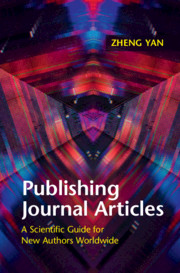Book contents
- Publishing Journal Articles
- Publishing Journal Articles
- Copyright page
- Dedication
- Contents
- Figures
- Preface
- Part I Nature of Journal Article Publication
- Part II Elements of Journal Article Publication
- Chapter 3 What Makes Our Manuscripts Publishable?
- Chapter 4 Who Are the Authors of Journal Articles?
- Chapter 5 Who Are the Readers of Your Articles?
- Part III Strategies of Planning Journal Articles
- Part IV Strategies of Writing Journal Articles
- Part V Strategies of Publishing Journal Articles
- Part VI Future of Journal Article Publication
- Index
Chapter 4 - Who Are the Authors of Journal Articles?
from Part II - Elements of Journal Article Publication
Published online by Cambridge University Press: 27 October 2020
- Publishing Journal Articles
- Publishing Journal Articles
- Copyright page
- Dedication
- Contents
- Figures
- Preface
- Part I Nature of Journal Article Publication
- Part II Elements of Journal Article Publication
- Chapter 3 What Makes Our Manuscripts Publishable?
- Chapter 4 Who Are the Authors of Journal Articles?
- Chapter 5 Who Are the Readers of Your Articles?
- Part III Strategies of Planning Journal Articles
- Part IV Strategies of Writing Journal Articles
- Part V Strategies of Publishing Journal Articles
- Part VI Future of Journal Article Publication
- Index
Summary
The core concept of this chapter is scientific authorship. In essence, authors must make substantial contributions to both research, writing, and publishing. Authorship comes with not only professional credits but also professional responsibilities. After presenting intuitive responses and multiple cases related to authorship (York, Michelle, Zack, and Chinese Graduate Students), the chapter discusses that authorship in the real world is diverse and complex, ranging from non-authors, co-authors, beginning authors, to ESL authors. It ends with several practical suggestions: being a good author focusing on both credits and responsibilities of authors rather than just credits; being a good coauthor focusing on changing professional contributions in the publication process; being a good first time author focusing on performing professional communication; and being a good ESL author focusing on making unique scientific contributions as ESL authors.
Keywords
- Type
- Chapter
- Information
- Publishing Journal ArticlesA Scientific Guide for New Authors Worldwide, pp. 36 - 47Publisher: Cambridge University PressPrint publication year: 2020

